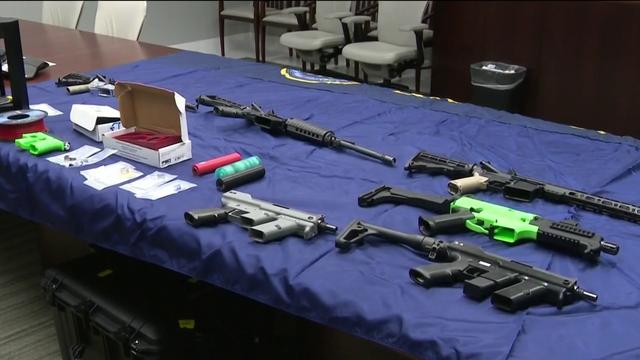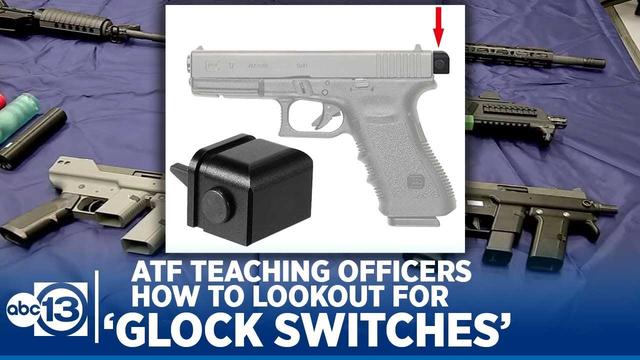
HOUSTON – Investigators from the Bureau of Alcohol, Tobacco, Firearms and Explosives are on a mission to train law enforcement agencies nationwide on how to spot illegally manufactured machine guns and the devices used to create them.
“That’s our campaign. To educate all law enforcement on what we’re seeing on the streets and trends,” said Earl Griffith, firearms enforcement officer for BATFE.
Griffith travels the nation training police departments on what to identify, which includes 3D printers and a hot item they’re being used to create: machine gun conversion devices, which are commonly known as Glock switches.
“Basically, it overrides that so that when you pull the trigger, it will continue firing until it fails or the ammunition source is gone away. So typically, a Glock pistol with an extended mag 33 rounder, you put one of these Glock switches on it, and it can fire those 33 rounds in like 1.4 seconds,” Griffith said.
AdCases involving suspects accused of being in possession of 3D printers and Glock switches have become more prevalent in the Houston area.

In January, Roland Caballero was accused of shooting three Houston police officers. Caballero now faces federal charges. He is accused of being in possession of a 3D printer and guns with Glock switches.
“We’re seeing more of it and it’s a trend that we’re seeing where now that the files and the 3D printers are capable of printing,” Griffith said. “Most of your gang members, the bad people, they already have a pistol, they already have a rifle. But now, if they can print those, they drop those into those guns in 30 seconds and now have machine guns.”
AdGriffith gave KPRC2 a look at examples of weaponry created or modified with the help of 3D printers, with added emphasis on Glock switches. He said part of his training includes introducing police departments to Glock switches because they can be tough to spot.
“We don’t know what we don’t know until we find them. And once we find them, we say, you know, our intel will say, ‘Okay, we found them so where’s the source? Who’s making these? Are you making them? Am I making them?’ So, we try to find that source, and we try to stop that source, and we try to stop the source that’s making them, handing them out or selling them,” he said.
Part of the challenge involves keeping up with technology, which Griffith said is more advanced than the federal gun laws.
“It’s tough because it’s ever-changing. Technology is changing every day and just the 3D printing world has changed in the last 10 years, tremendously,” Griffith said.
AdThat’s why he said it’s important for police agencies to be aware of what exists.
“So, we say if you go into a house and you’re subject might have made some of these (Glock switches), look for printers, look for files and so forth. So we train them on what to look for out there,” he said.